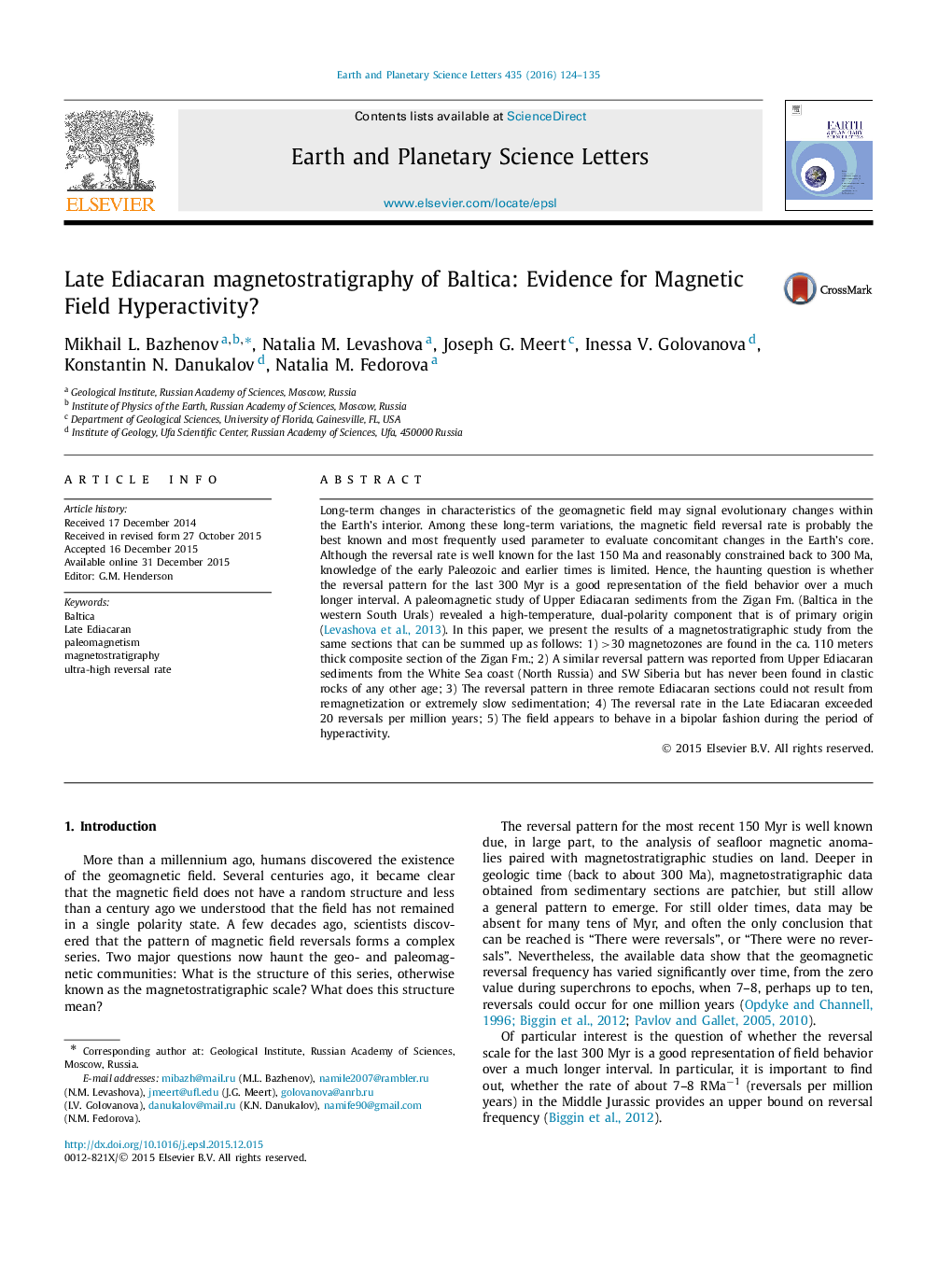| کد مقاله | کد نشریه | سال انتشار | مقاله انگلیسی | نسخه تمام متن |
|---|---|---|---|---|
| 6427651 | 1634721 | 2016 | 12 صفحه PDF | دانلود رایگان |

- >30 magnetozones are found in the 110 m thick composite Upper Ediacaran section of the South Urals.
- A similar reversal pattern was reported from coeval sediments from the White Sea area and SW Siberia.
- The reversal rate in the Late Ediacaran exceeded 20 reversals per million years.
- The field behaved in a bipolar fashion during the period of hyperactivity.
Long-term changes in characteristics of the geomagnetic field may signal evolutionary changes within the Earth's interior. Among these long-term variations, the magnetic field reversal rate is probably the best known and most frequently used parameter to evaluate concomitant changes in the Earth's core. Although the reversal rate is well known for the last 150 Ma and reasonably constrained back to 300 Ma, knowledge of the early Paleozoic and earlier times is limited. Hence, the haunting question is whether the reversal pattern for the last 300 Myr is a good representation of the field behavior over a much longer interval. A paleomagnetic study of Upper Ediacaran sediments from the Zigan Fm. (Baltica in the western South Urals) revealed a high-temperature, dual-polarity component that is of primary origin (Levashova et al., 2013). In this paper, we present the results of a magnetostratigraphic study from the same sections that can be summed up as follows: 1) >30 magnetozones are found in the ca. 110 meters thick composite section of the Zigan Fm.; 2) A similar reversal pattern was reported from Upper Ediacaran sediments from the White Sea coast (North Russia) and SW Siberia but has never been found in clastic rocks of any other age; 3) The reversal pattern in three remote Ediacaran sections could not result from remagnetization or extremely slow sedimentation; 4) The reversal rate in the Late Ediacaran exceeded 20 reversals per million years; 5) The field appears to behave in a bipolar fashion during the period of hyperactivity.
Journal: Earth and Planetary Science Letters - Volume 435, 1 February 2016, Pages 124-135